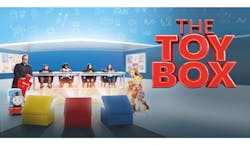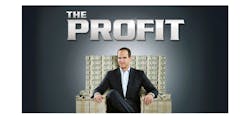Download this article in PDF format.
If you could design a time machine and travel back 20 years (1997), turn on the TV during prime time and you would have seen shows such as The Practice, ER, and The X-Files. Most television shows on the air back then were of the legal, medical, or comedic variety—nothing that centered on an engineering character of any kind (Tim the Toolman Taylor doesn’t count). That is unless the characters on those shows needed a specialist of some kind to help them solve a crime or fix some mundane machinery.
Beyond PBS or the Discovery channel highlighting a technical documentary on space exploration or the like, there was virtually nothing catered to the engineer. Except maybe Star Trek: Voyager and even then, there was only a handful from that series that featured Chief Engineer B’Elanna Torres.
Get back into that time machine and head to present day, and you’ll find almost an endless stream of engineer/engineering-based shows to keep you entertained throughout the week and even over the weekend. Over the last 20 years, the world has shifted and increased its focus on the younger generations to excel in subjects such as the sciences, technology, engineering, and math (STEM), as governments and academic institutions predict those are/will be the most in-demand jobs over the next two decades and beyond.
People just love to see engineers, or people in general, make devices and gadgets. They celebrate seeing new ideas come to light. It’s a great time to be an engineer!
(Image credit: Discovery Channel)
While tech documentaries have been around for decades, it was perhaps the introduction of the MythBusters back in 2003 on Discovery that propelled the engineer into the limelight. As a result, we now have myriad TV shows that (for lack of a better word) glorify being skilled in any one of the engineering disciplines—electrical, mechanical, chemical, software, civil, systems, and even the black sheep of the family: interdisciplinary.
Deciding which shows are worthwhile is a daunting task, but is ultimately up to the viewer. On that note, we’ll look at a few of the popular ones currently out on TV, cable or streaming service of choice-
Bill Nye Saves the World (Netflix)
(Image credit: Netflix)
While many people know Bill Nye as a mechanical engineer who had a popular children’s show (Bill Nye the Science Guy), few know that he quit his job at Boeing (invented a hydraulic resonance suppressor tube for 747s) in 1986 to become a comedian. Obviously, that career path didn’t quite pan out, and he became the fun scientist we watched for five years on Saturday mornings beginning in 1993.
After the show ended in 1998, Nye went on to create and participate in a few short-lived science shows over the years, and even dabbled as a contestant on Dancing with the Stars and as a Science Project judge at the White House. His latest claim to fame is his new outing on Netflix called Bill Nye Saves the World. In the show, Nye and several correspondents tackle varied issues and problems centered in the science and pop-culture communities: climate change, medicine, AI, diets, video games, and space exploration, among a host of others.
The Toy Box (ABC)
(Image credit: ABC)
ABC’s The Toy Box is a different type of show that focuses on contestants who invent new toys with an end goal of their creations being produced by Mattel and featured in Toys “R” Us stores. Think of it like making your own invention and trying to crowdfund it while thousands of viewers are watching… you get the idea.
Contestants must first present their designs/creations to a panel of judges consisting of toy industry professionals, who decide whether or not they will appeal to insanely fickle critics—kids. If those toys pass muster, they are then judged by a panel of children who ultimately decide their fate.
Only one contestant out of several may advance from each heat (seven in all) as a ‘Finalist.' Those seven Finalists then compete to be the winner, which is again chosen by the child judges who once more play with the final toys to choose the victor. The great aspect of the show is it gets kids interested in the Maker community and allows them to be creative in aspects of toy design and production.
Shark Tank (ABC)
(Image credit: ABC)
Another interesting take on a contestant-based engineering show first debuted in Japan in 2001 as Dragon’s Den, but those in the U.S. and Australia know it as Shark Tank. Again, contestants vie against one another to gain venture capital from a panel of “shark” investor judges in a setting geared for adults rather than children. While those sharks are paid for being on the show, they invest their own money out-of-pocket to fund the winners.
Contestants pitch their product or business idea to the investors and can make a “deal” if even one of the investors is interested. If they fail to garner any interest, they leave with nothing but what they came with. This show is like a cross between America’s Got Talent and Kickstarter, with losing contestants rejected brutally or politely depending on the judge. And there’s good reason for that, as some of the contestants who’ve successfully made a deal have backed out of it, claiming they only wanted to be on TV.
(Image credit: ABC)
Steve Harvey’s Funderdome is another of those great seed-funding shows that provide an opportunity for aspiring engineers and makers to get their designs funded in pure contest fashion. This show pits talented entrepreneurs against one another to win over the audience with their perspective designs or business ideas. However, there’s a twist: Each contestant has an opportunity to take a lesser cash prize, forfeiting the grand prize if they choose before the winner is announced.
Ellen’s Design Challenge (HGTV)
(Image credit: HGTV)
Ellen’s Design Challenge is a little off the beaten path in terms of competition. Yes, this show also pits contestants against one another to earn a cash prize for their designs. What’s different is that it focuses on the steps taken to get their designs to fruition, all in a 24-hour period. In this case, the designs are furniture-related and contestants compete over several rounds that include a sketch phase, design phase, and build phase. A panel of experts judges each phase and the winners who make it through to the end receive $100,000.
The Profit (CNBC)
(Image credit: CNBC)
Marcus Lemonis is a well-known businessman/philanthropist who turned his talent at creating successful businesses into a reality TV show. Contestants compete to garner seed-funding to create their own businesses based on their product ideas and designs. The catch: Marcus gains an ownership stake within the winning company, but along with that capital investment (out of his pocket alone), they also get Marcus’s expertise knowledge of the business world.
Crowd Rules (CNBC)
(Image credit: CNBC)
It’s cutthroat competition for three fledgling businesses who vie for a $50,000 grant to get their businesses off the ground. Each contestant must win over a crowd of 100 judges who in turn vote for the best pitch and product design. To win, each must describe their operations, successes, failures, and future plans. The audience then votes on which pitch was best presented and more likely to succeed over the others. Later in the show, a second vote eliminates one of the three contestants, and a third and final vote at the end of the program determines the winner.
It’s a good time to be an engineer with an idea. Makes me want to venture into the TV world of DIY competition.
These represent just a small sampling of the shows on the small screen that have engineering overtones, with more seemingly being added nearly every year. If they aren’t your cup o’ tea, there are always the old standbys such as MegaStructures, How They Do It, Extreme Engineering, and World’s Toughest Fixes, to name just a few.
About the Author
Cabe Atwell
Technology Editor, Electronic Design
Cabe is a Technology Editor for Electronic Design.
Engineer, Machinist, Maker, Writer. A graduate Electrical Engineer actively plying his expertise in the industry and at his company, Gunhead. When not designing/building, he creates a steady torrent of projects and content in the media world. Many of his projects and articles are online at element14 & SolidSmack, industry-focused work at EETimes & EDN, and offbeat articles at Make Magazine. Currently, you can find him hosting webinars and contributing to Electronic Design and Machine Design.
Cabe is an electrical engineer, design consultant and author with 25 years’ experience. His most recent book is “Essential 555 IC: Design, Configure, and Create Clever Circuits”
Cabe writes the Engineering on Friday blog on Electronic Design.










